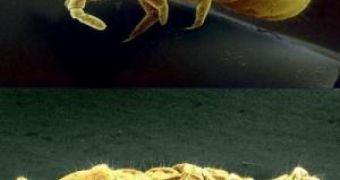When you can, you flee out from the winter cold to some more welcoming places like Hawaii and Caribbean.
Birds do it, some bats, mammals, and insects go to warmer zones during the winter.
Many mammals hibernate, but what about the many cold-blooded animals, like arthropods (insects, spiders and crustaceans) or frogs?
They cannot migrate long distances to keep off the freezing winter temperatures but when the warm weather returns, the starts swarming immediately.
So how can they pass the winter without being killed off by the cold?
Scientists have already found anti-freezing proteins in fish, frogs and some insects.
Now Dr Melody Clark, from the British Antarctic Survey, has described data on the fascinating ways two species of arthropods combat the cold.
Onychiurus arcticus, a type of Arctic wingless primitive insect employs protective dehydration to resist the harsh Arctic winters.
The water is lost from the body across a diffusion gradient between the animals' super-cooled body fluids and ice in the environment.
"During this process the body loses all its water and you end up with a normal looking head, and a body which looks like a crumpled up crisp packet when it is fully dehydrated. But add a drop of water and it all goes back to normal!" explains Dr Clark.
Researchers have looked to the various stages of this process to assess which genes were turned on.
Cryptopygus antarcticus, an Antarctic relative of the Onychiurus, employs a different mechanism to resist the cold temperatures.
This species accumulates anti-freeze chemicals that lower the temperature at which their bodies freeze, so they can experience temperatures as low as minus 30?C.
Inside their population, there is a clear division into less- and more-cold hardened animals.
When the scientists investigated for differences in gene expression levels between the two types, they discovered that the differences could be connected to moulting (a growing process when arthropods shed their exoskeleton).

 14 DAY TRIAL //
14 DAY TRIAL //